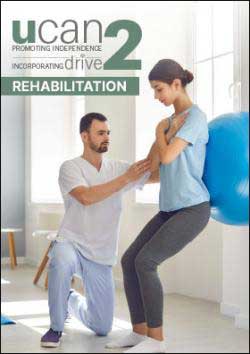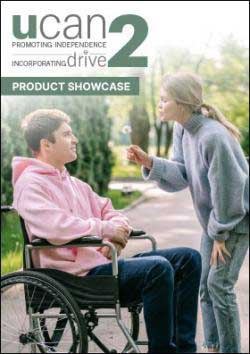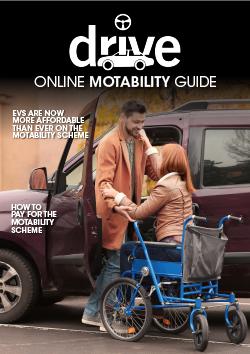Louise Karwowski, Director of Education at Cognassist talks to Ucan2 about ADHD in girls for ADHD month.
Attention deficit hyperactivity disorder, or ADHD, is a condition that comes with stereotypes – fidgeting and a general struggle with self-control. However, as with most neuropsychiatric conditions, our assumption that they are single faceted or are exhibited in a group of neatly defined behaviours is misguided. For a condition that affects approximately 5% of children and 2% of adults in the UK, too few people recognise that ADHD comes in numerous forms, with girls often exhibiting symptoms that are different to those most often associated with the condition. For this reason, diagnoses occur three times more often in boys than in girls, with boys receiving more frequent referrals to mental health professionals.
Failure to identify and diagnose young women and girls with ADHD can have long-lasting and serious effects on their rest of their lives – research has shown a lack diagnosis, and therefore a subsequent lack of support, can affect an individual’s work performance, mental health and relationships throughout their life. It is therefore of the utmost importance that we bridge this knowledge gap and ensure girls with ADHD are no longer left behind.
 Understanding the subtypes of ADHD
Understanding the subtypes of ADHD
There are three subtypes of ADHD – hyperactive-impulsive, inattentive, and combined, each of which has slightly different symptoms. These variations can make diagnosis trickier as people’s understanding of the condition may not align with the behaviours exhibited.
Those with the hyperactive-impulsive subtype are most likely to fit the stereotype of ADHD mentioned above – fidgeting, impulsiveness and excessive restlessness. Those with the inattentive subtype are less likely to struggle with self-control or have difficulty sitting still, but rather are more prone to making careless mistakes and struggle with concentration and organisation. As girls tend to present with the inattentive type, there can be a delay in diagnosis as they are thought to be shy, withdrawn or passive rather than potentially having ADHD. Usually, they do not get a diagnosis, or their symptoms are mistaken for depression or anxiety.
The problem is made worse by the fact that the bulk of ADHD research has been conducted on boys and men. Generally speaking, boys will show symptoms very early in life, and see a decrease in symptoms at puberty. The opposite is true for girls, whose symptoms may be exacerbated by increasing levels of oestrogen during puberty. This means they are less likely to meet the classic diagnostic criteria and may slip through the net.
Spotting the signs
Moving beyond the narrow understanding of ADHD most people have is, of course, the first step in addressing failures in diagnosing young girls and women with the condition. Once we have done so, the identification and diagnosis of symptoms is likely to improve.
Some symptoms friends and family can look out for that tend to manifest in girls include a lack of attention to detail, becoming easily distracted, trouble focusing, or becoming bored quickly. Those with ADHD can often have difficulty learning or organising new information, trouble completing homework or losing items needed to stay on task. Daydreaming and confusion can be common, as well as seeming not to listen when spoken to. They might find it difficult to follow instructions or generally process information more slowly, which means mistakes can be more frequent than peers.
As such, most of the symptoms of ADHD are actually issues with executive function. These symptoms change over time, so children may fit different presentations as they get older. This, again, is something that must be appreciated to address the lack of diagnoses for women and girls.
What parents can do
Many parents will also wonder what they can do if they suspect their daughter may have symptoms of ADHD. When a child is very young – until the age of around three – it can be difficult to identify cognitive issues. Obviously, parents will want to ensure that their child is building a secure foundation for learning and processing information, but it’s important not to jump to conclusions if you think their progress is a little slower in these areas. In this age range, what’s normal in terms of neurological development varies widely and many ‘late developers’ will catch up.
When a child is a few years older, if you suspect they may have a learning need, it’s a good idea to have them tested for a condition and potentially have a diagnosis confirmed. A diagnosis can open the door for your child to receive appropriate learning support in school, so it’s worth looking into this as early as possible. Acknowledging difference in a positive way and framing this in terms of strengths and weaknesses can be helpful, especially if a child is feeling sensitive about needing support.
If they do receive a diagnosis of ADHD, it is important to remember that medication is not the only answer. A comprehensive multimodal approach to treatment that includes behavioural, psychological, and of course -considering the current systemic failings – educational support is required. Put together, these pillars of support will help to address areas where they may struggle, while encouraging their strengths to develop even further.
Diversity within human thinking should be celebrated. There’s no such thing as a ‘perfectly normal’ brain: in fact, our brains are all unique, just like our fingerprints but far more complex. What’s crucial is that everyone’s strengths and weaknesses are fully supported, so that they are able to flourish and reach their full potential. Openness, acknowledgement of difference and receiving the right support can be transformational for young girls, helping to remove any barriers they face in their education and throughout their lives.
Read our article on the top activities for children with ADHD: https://www.ucan2magazine.co.uk/blog/adhd

















